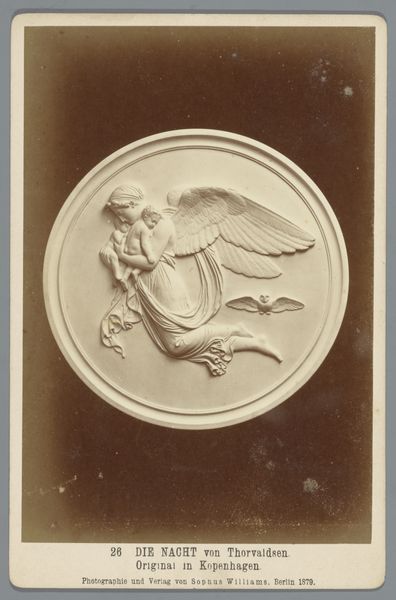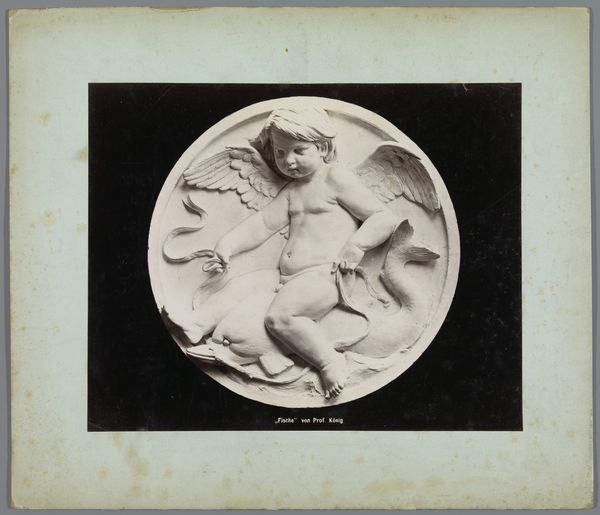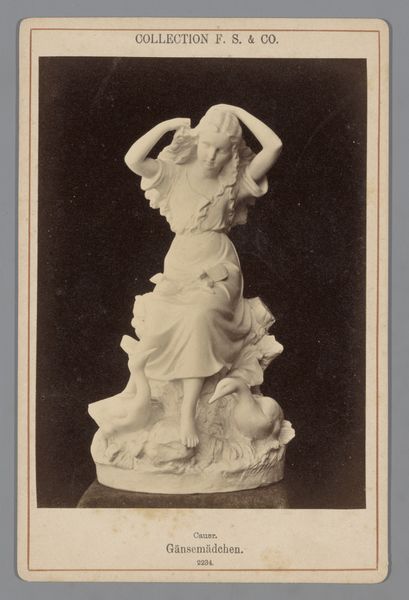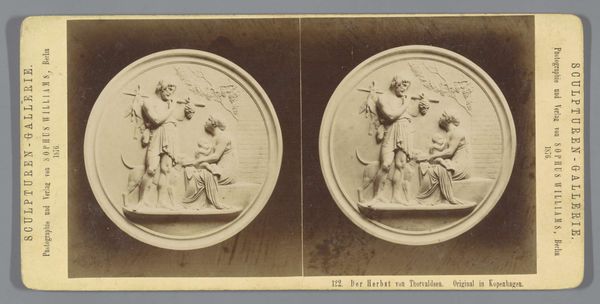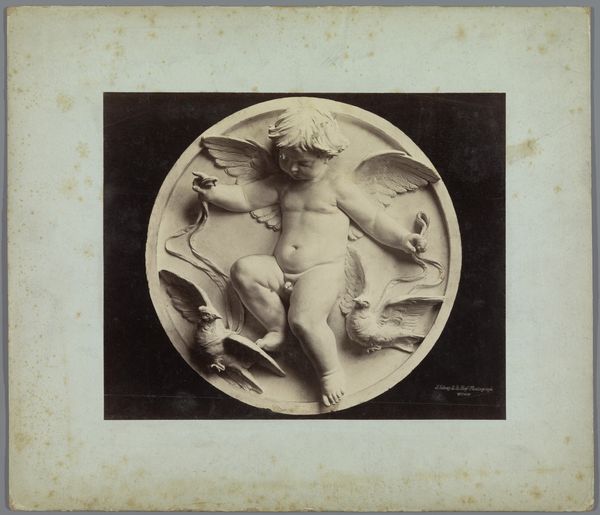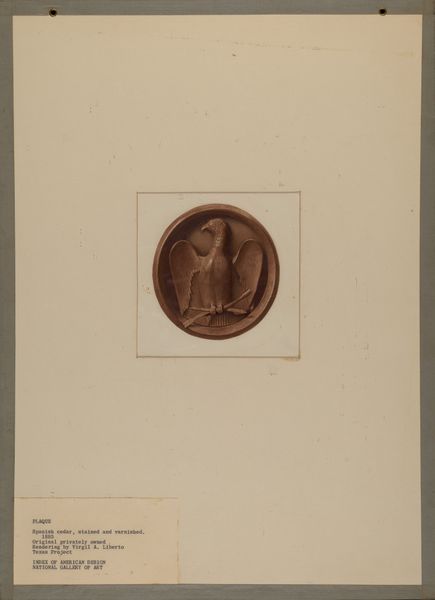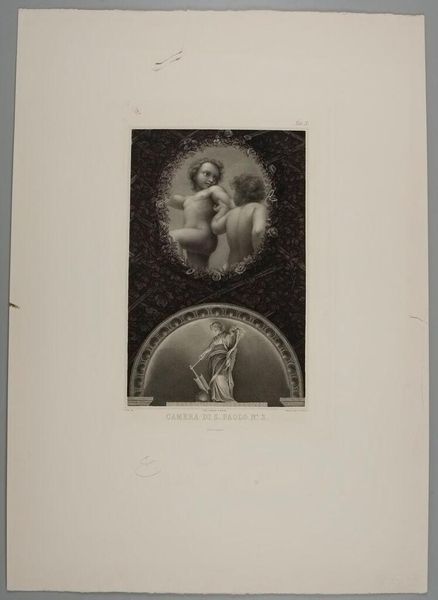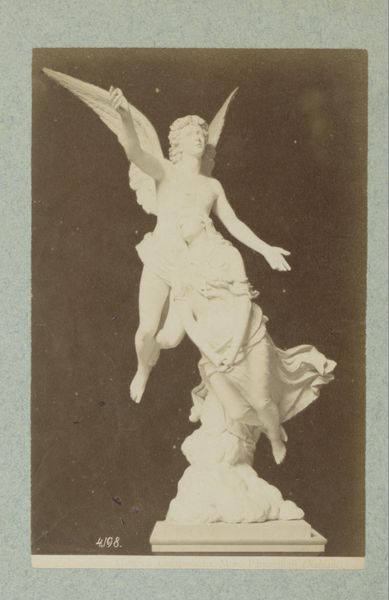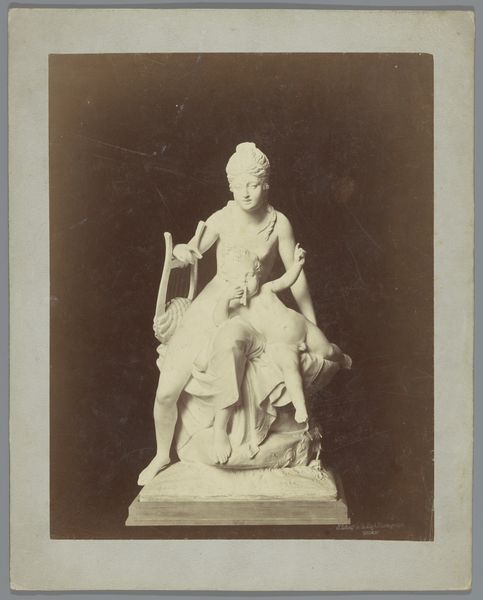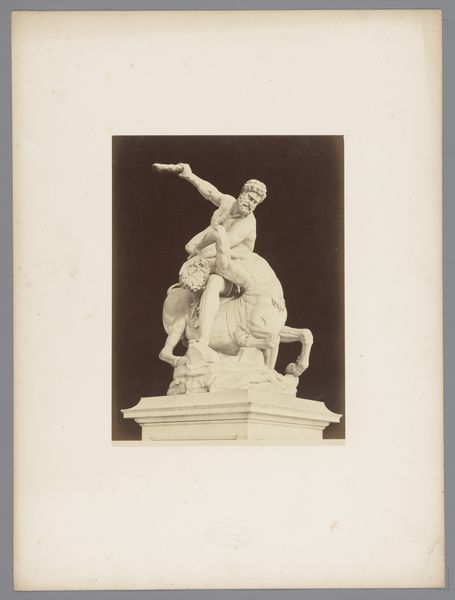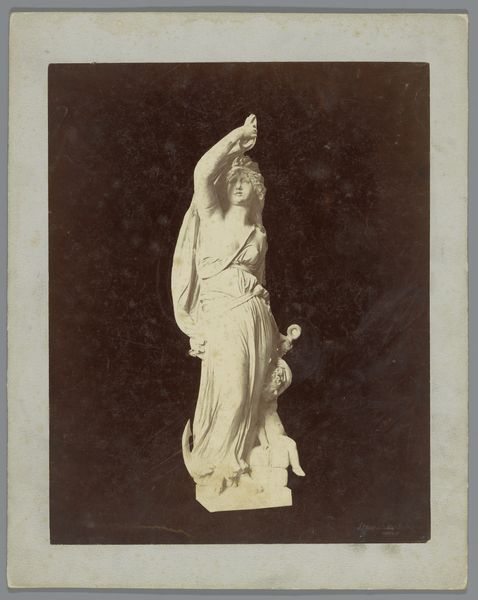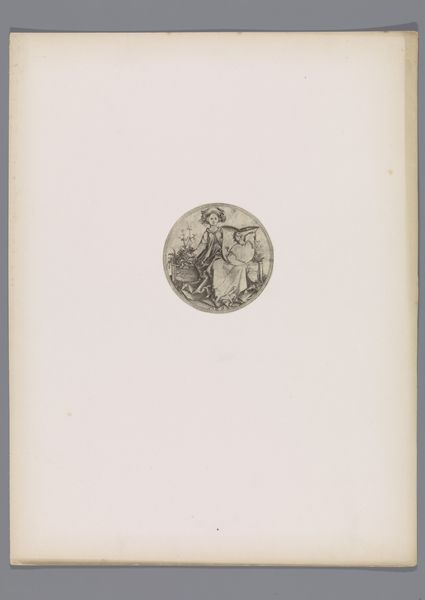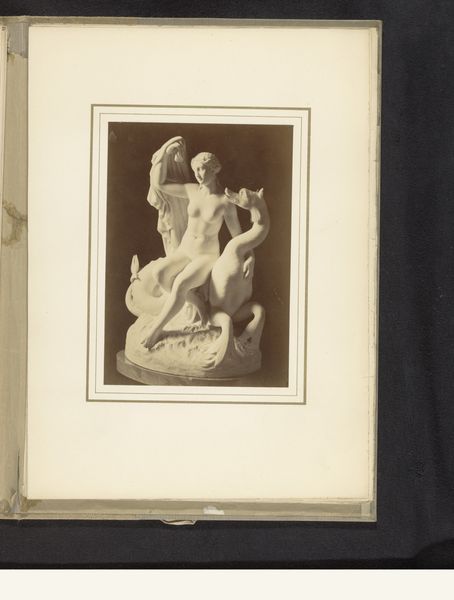
relief, photography, sculpture, plaster, gelatin-silver-print
#
portrait
#
allegory
#
neoclassicism
#
relief
#
classical-realism
#
perspective
#
figuration
#
photography
#
sculpture
#
plaster
#
gelatin-silver-print
#
history-painting
Dimensions: height 150 mm, width 100 mm
Copyright: Rijks Museum: Open Domain
Curator: Before us is a photograph taken in 1879 by Sophus Williams, depicting a plaster relief titled “Reliëf, voorstellende een personificatie van de dag,” or “Relief, depicting a personification of the day.” Editor: Immediately, it strikes me as graceful. The figures seem to float within that circular frame, a dance frozen in plaster. There’s something tender about the way the winged figure cradles the child. Curator: Indeed, the medium of plaster is significant here. Often associated with preliminary models and casts, plaster occupies an interesting position between high art and the artisanal process. It would have allowed for relatively easy reproduction and dissemination of this neoclassical scene. Note the stark, almost photographic rendering, emphasizing line and form through shadow play, made even more striking through Williams’s own photographic work in Berlin. Editor: The figures definitely recall classical sculpture. It is, to me, serene, yet purposeful. Is it Dawn carrying the promise of a new day? A powerful allegory, isn't it, this gentle giant representing the start of activity. It sparks an idea to create something new myself; perhaps even start painting again. Curator: Allegorical representations of day and night, light and darkness, were very common in Neoclassical art. What makes this piece compelling is precisely how the artist harnesses the materials and photographic technologies available in the 19th century. Think about the labor involved – creating a plaster cast was relatively inexpensive to mass produce the sculpture, in contrast to marble or bronze. This, combined with photographic reproduction, really democratizes artmaking at this period. Editor: It really lets us see the intimacy through new mediums. This photo provides us not only the plaster texture in relief form, but gives a lens to appreciate the way Williams brings in photographic art as well. Looking at this makes me hopeful that there will be a renaissance within artistic innovation again, much like this time. Curator: Precisely. Williams's photograph acts as a conduit, connecting us to a world where the ideals of neoclassicism meet the realities of industrial reproduction. Editor: It does carry that essence of transformation; where a traditional plaster relief sculpture meets new technologies. Such a wonderful dialogue across time and process. Thank you for pointing those nuances, especially between high art and the daily making of it all.
Comments
No comments
Be the first to comment and join the conversation on the ultimate creative platform.
